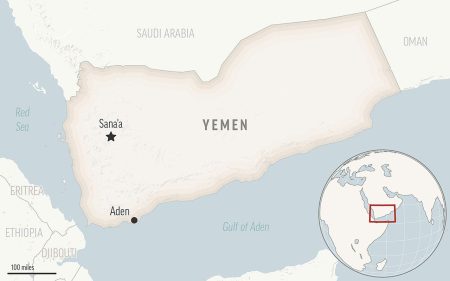Indonesian authorities issued a tsunami alert on Wednesday after eruptions at Ruang mountain on the northern side of Sulawesi island sent ash thousands of feet into the air. More than 11,000 people were ordered to evacuate the area as the volcano had at least five large eruptions in the past 24 hours, prompting officials to raise the volcano alert to its highest level. Indonesia, known for its 120 active volcanoes, sits along the “Ring of Fire,” a series of seismic fault lines around the Pacific Ocean that make it prone to volcanic activity.
At least 800 residents left the area earlier in the day, and authorities urged tourists and others to stay at least 3.7 miles away from the 2,378-foot Ruang volcano. Officials were concerned that a part of the volcano could collapse into the sea, potentially causing a tsunami similar to what happened during a 1871 eruption. Tagulandang island, located northeast of the volcano, was also at risk, and residents there were among those being told to evacuate. Indonesia’s National Disaster Mitigation Agency announced that residents would be relocated to Manado, the nearest city on Sulawesi island, a six-hour journey by boat.
In 2018, the eruption of Indonesia’s Anak Krakatau volcano resulted in a tsunami along the coasts of Sumatra and Java after parts of the mountain collapsed into the ocean, leading to the tragic death of 430 people. The incident served as a reminder of the potential dangers posed by volcanic activity in the region. The eruption at Ruang mountain was a stark reminder of the ongoing threat that active volcanoes in Indonesia posed to nearby communities and the necessity of vigilance and preparedness in the face of such natural disasters.
As volcanic eruptions continued at Ruang mountain, the risk of a potential tsunami loomed over the surrounding areas. Authorities were on high alert and worked diligently to ensure the safety of residents through prompt evacuation measures. The eruption highlighted the urgent need for disaster preparedness and a comprehensive response plan to mitigate the impact of such natural calamities. The incident also underscored the importance of continued monitoring and assessment of volcanic activity to prevent any potential disasters and safeguard the lives of those living near active volcanoes in Indonesia.
Indonesia’s rich volcanic landscape, which is a part of the “Ring of Fire,” presents numerous challenges and risks due to the volatile geological conditions prevalent in the region. The country’s history of volcanic eruptions has resulted in devastating tsunamis and loss of lives, prompting authorities to prioritize safety measures and evacuation protocols in response to such emergencies. The ongoing eruptions at Ruang mountain also drew attention to the fragility of the environment and the need for sustainable practices in land management to minimize risks associated with volcanic activity and mitigate the potential impact on local communities.
In conclusion, the eruption at Ruang mountain and the subsequent tsunami alert served as a stark reminder of the inherent risks associated with living near active volcanoes in Indonesia. The timely response by authorities to evacuate residents and issue safety warnings underscored the importance of preparedness and vigilance in the face of natural disasters. As Indonesia continues to grapple with its volcanic landscape and the threats posed by geological activity, it is essential for communities to be well-informed and equipped to respond to such crises effectively. By investing in disaster prevention measures and ensuring coordinated responses to emergencies, Indonesia can work towards minimizing the impact of volcanic eruptions and safeguarding the lives of its citizens from potential disasters in the future.















